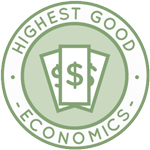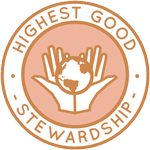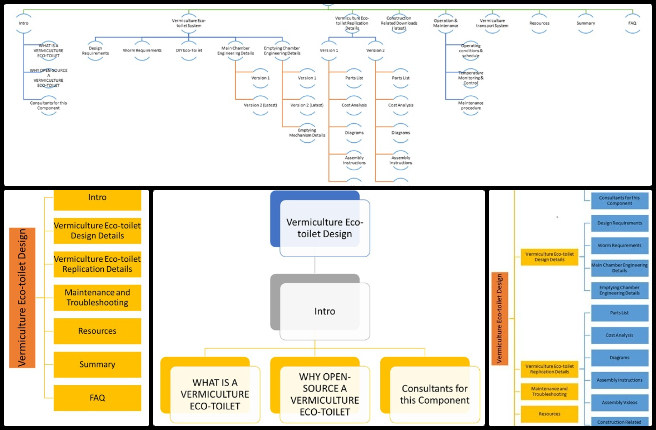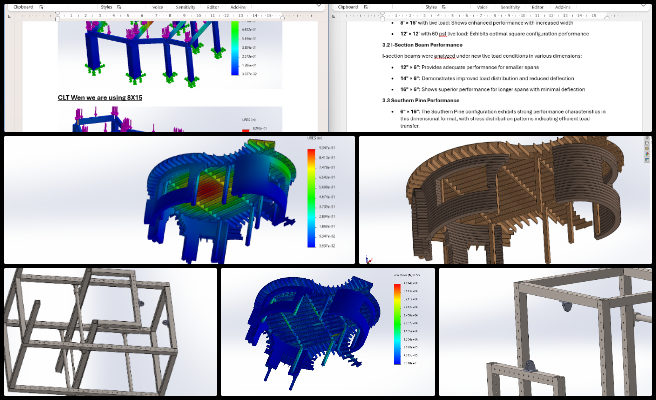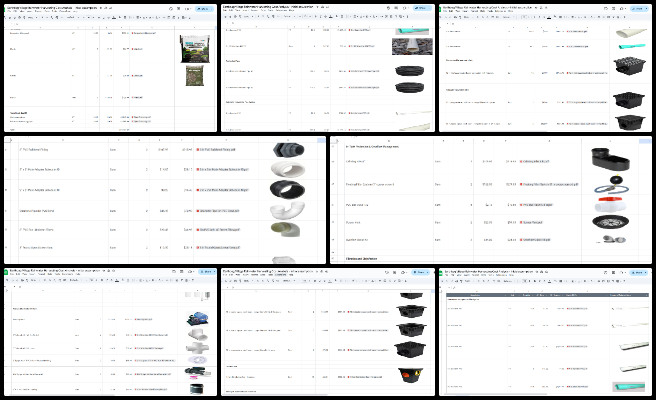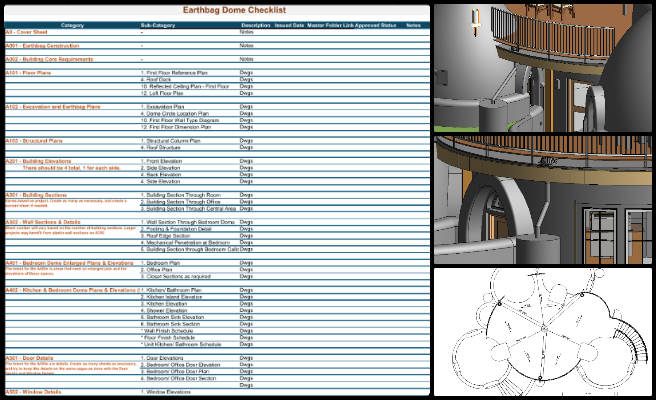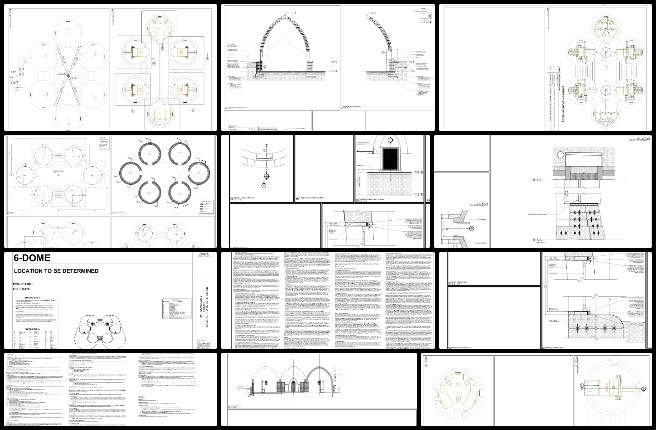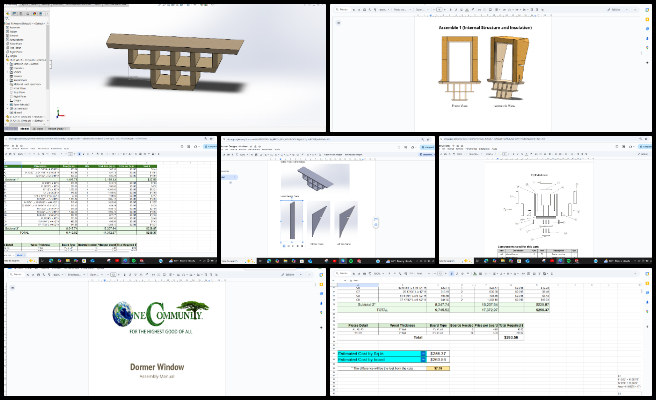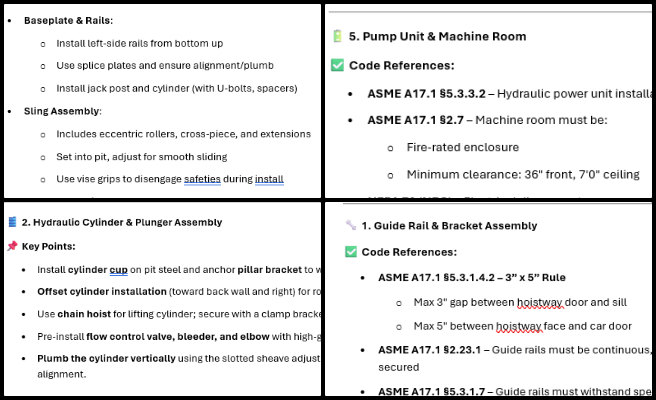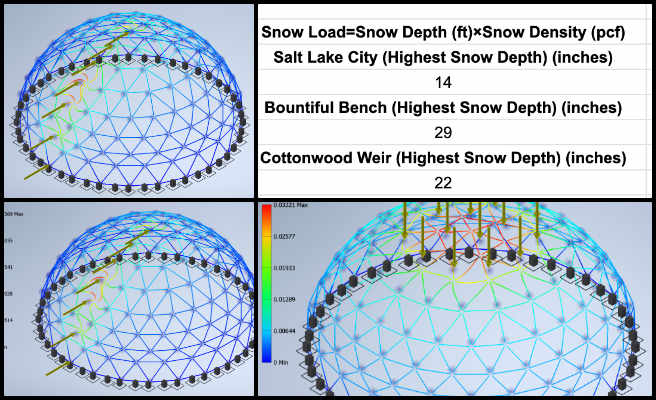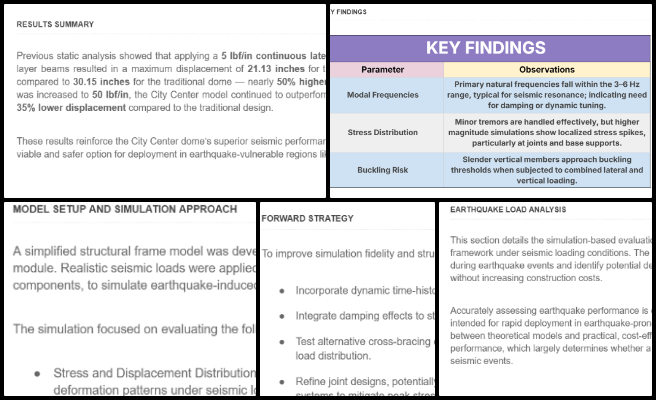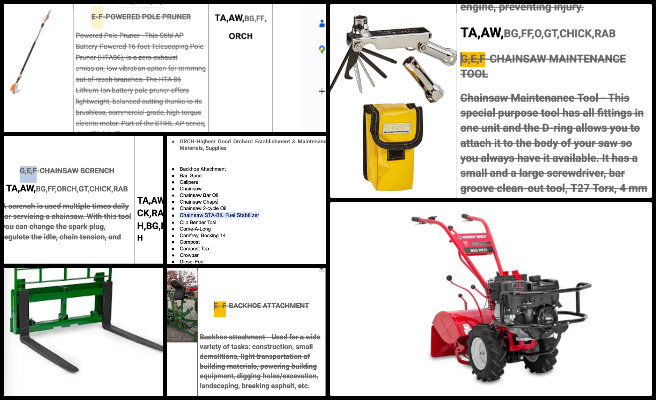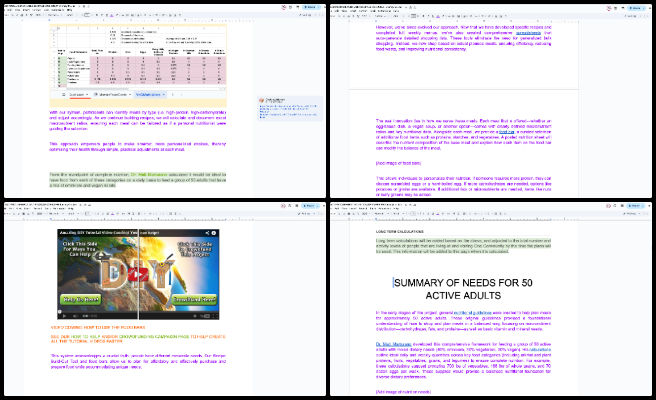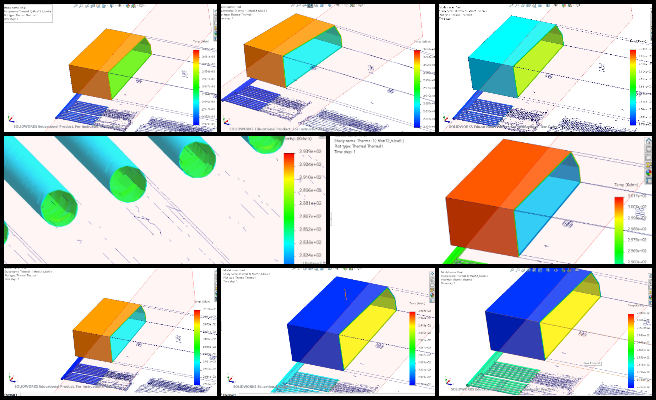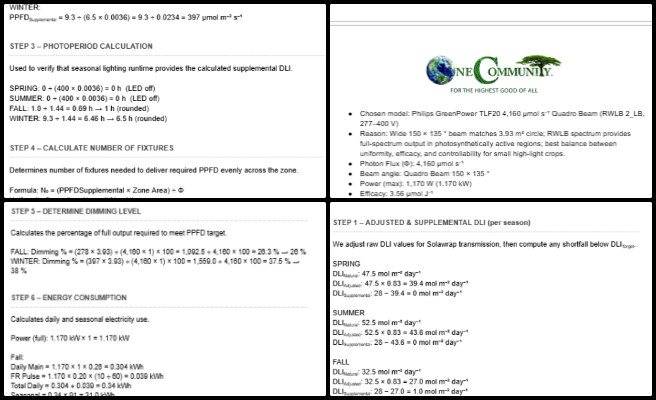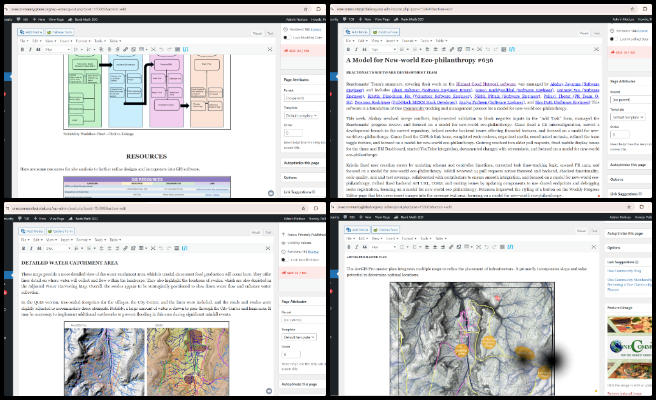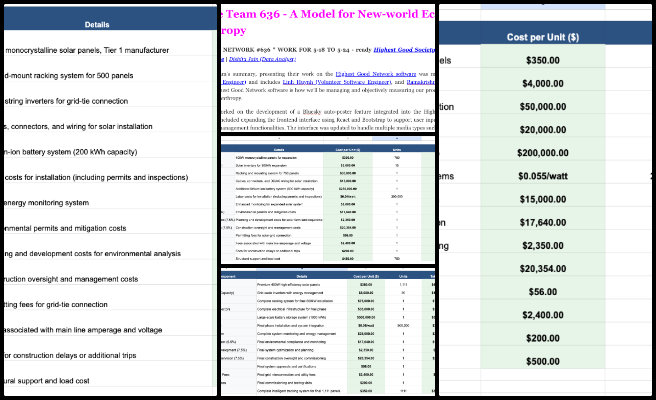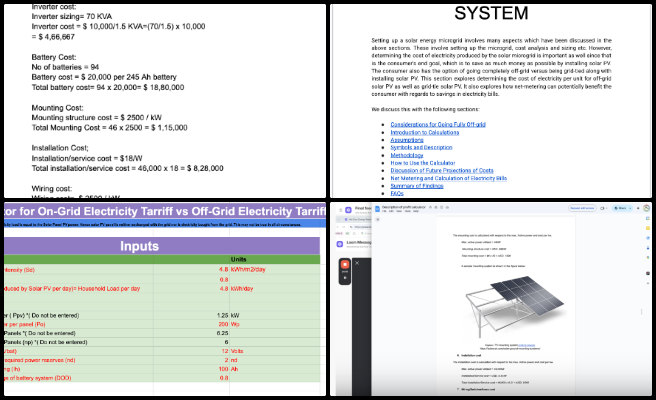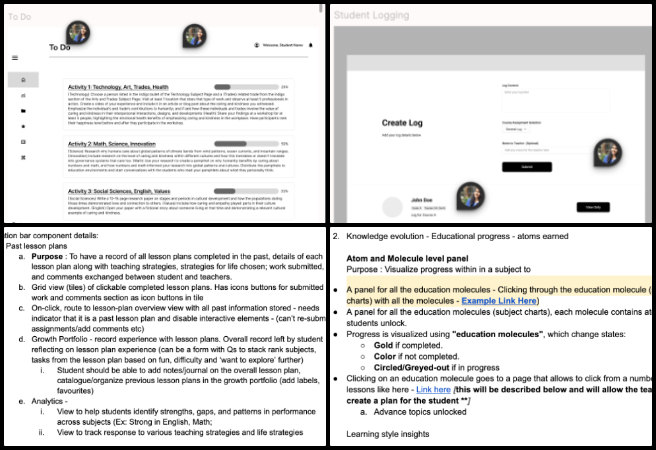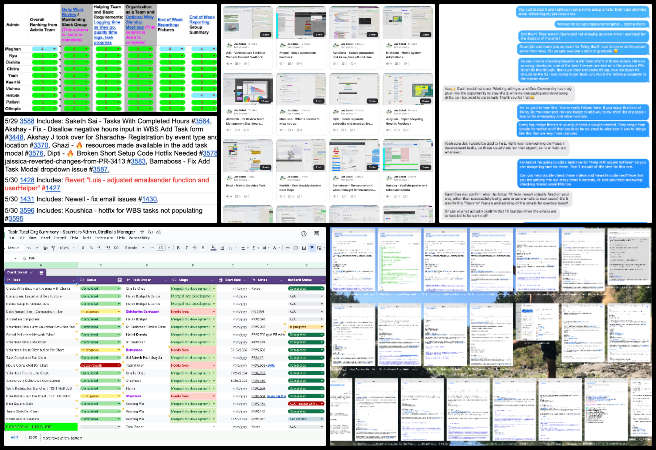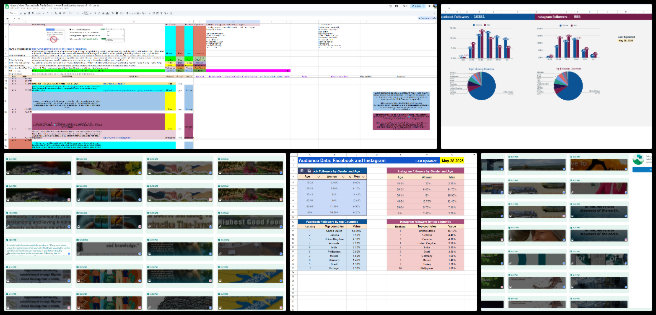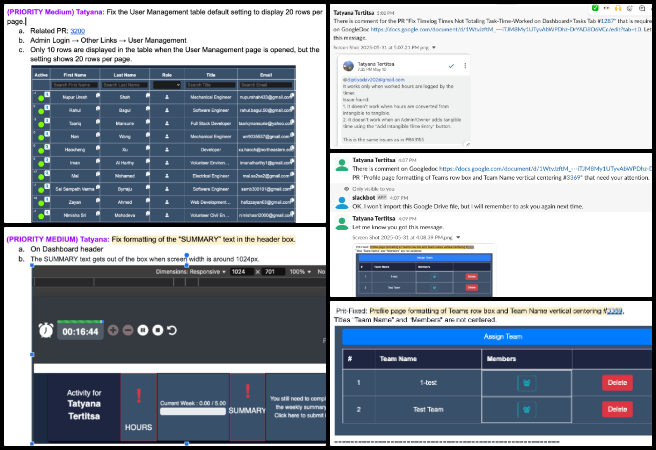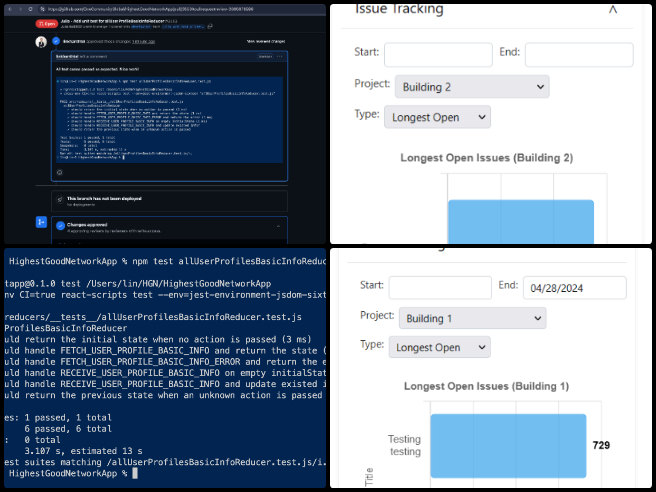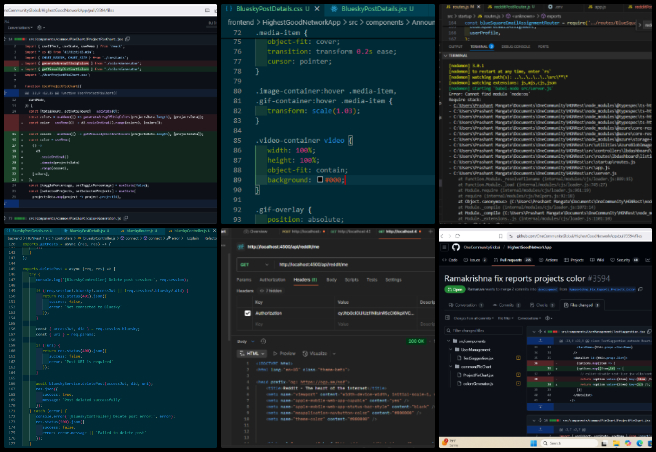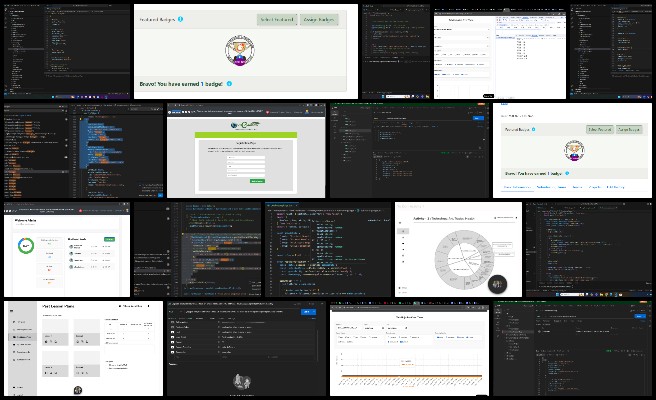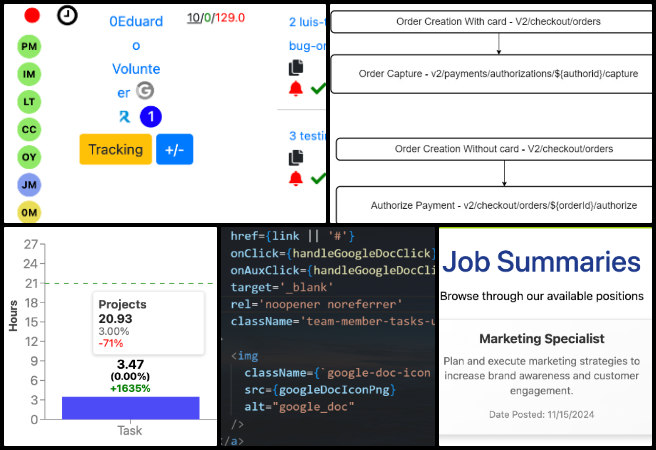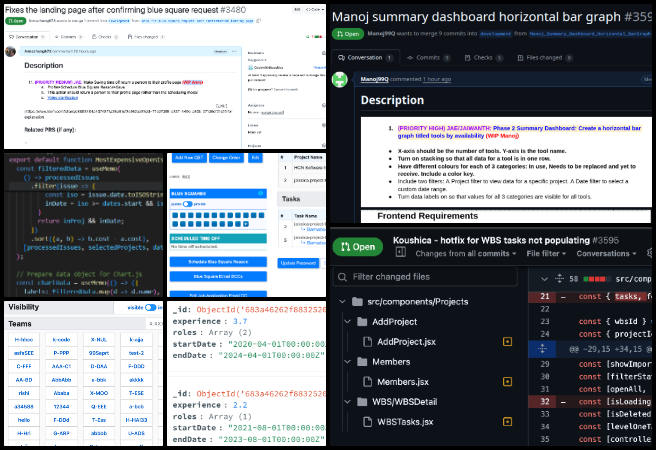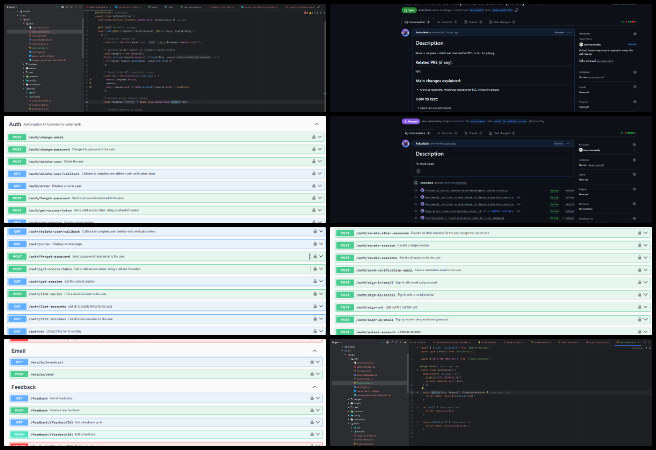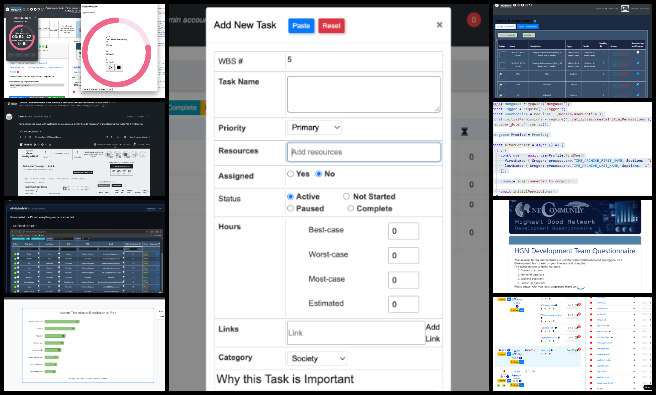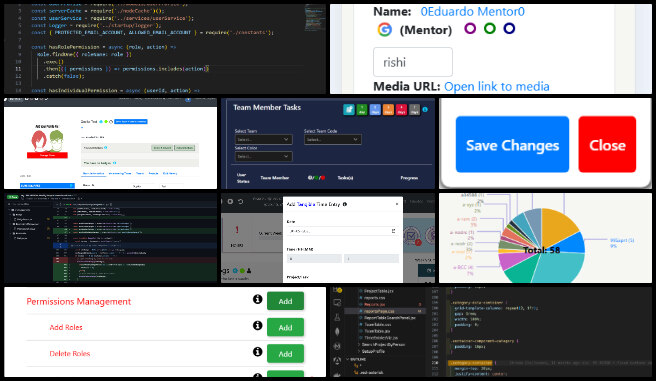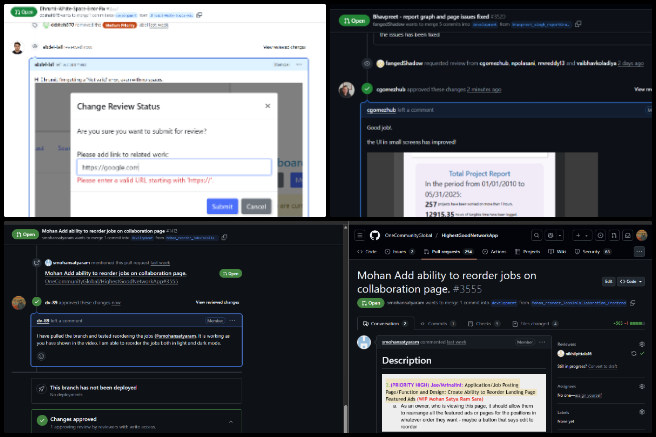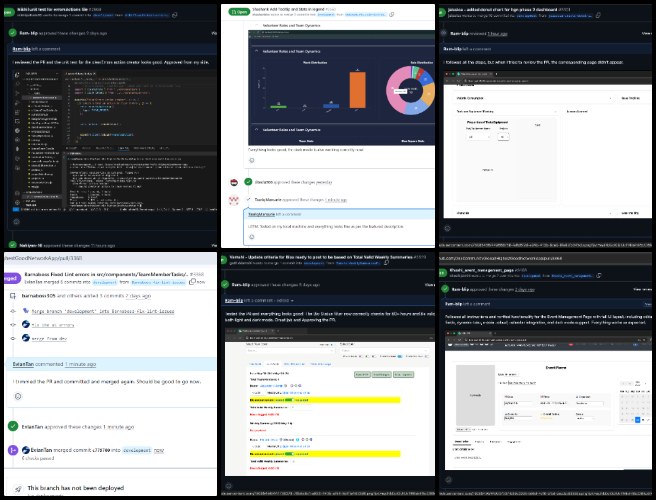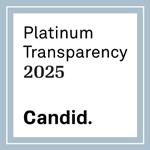Collectively Improving the Standard of Living – One Community Weekly Progress Update #637
One Community is an all-volunteer organization dedicated to collectively improving the standard of living through our holistic approach to food, energy, housing, education, for-profit and non-profit economic design, social architecture, fulfilled living, global stewardship practices, and more. Our open source and free-shared model, meticulously designed to become self-replicating, serves as the foundation for creating a global network of teacher/demonstration hubs commitment to “The Highest Good of All“.
- Here’s our project overview
- Here’s our world-change methodology
- Here’s how this becomes self-replicating
- Here’s how we are open source and free-sharing all the do-it-yourself designs
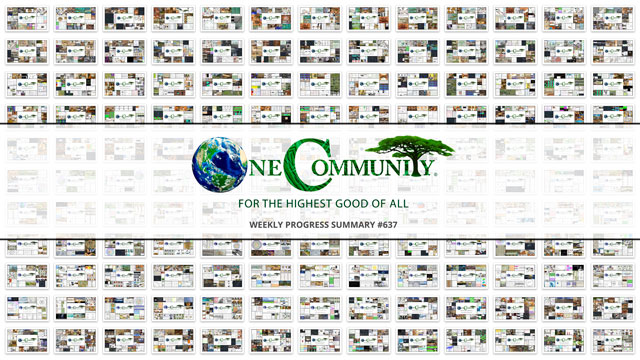
OUR MAIN OPEN SOURCE HUBS
Click on each icon to be taken to the corresponding Highest Good hub page.
One Community’s physical location will forward this movement as the first of many self-replicating teacher/demonstration communities, villages, and cities to be built around the world. This is the June 2nd, 2025 edition (#637) of our weekly progress update detailing our team’s development and accomplishments:
Collectively Improving the Standard of Living
One Community Progress Update #637
DONATE | COLLABORATE | HELP WITH LARGE-SCALE FUNDING
CLICK HERE IF YOU’D LIKE TO RECEIVE AN EMAIL EACH WEEK WHEN WE RELEASE A NEW UPDATE
YOU CAN ALSO JOIN US THROUGH SOCIAL MEDIA
ONE COMMUNITY WEEKLY UPDATE DETAILS
HIGHEST GOOD HOUSING PROGRESS
 One Community is collectively improving the standard of living through Highest Good housing that is artistic and beautiful, more affordable, more space efficient, lasts longer, DIY buildable, and constructed with healthy and sustainable materials:
One Community is collectively improving the standard of living through Highest Good housing that is artistic and beautiful, more affordable, more space efficient, lasts longer, DIY buildable, and constructed with healthy and sustainable materials:
- Learn about: Our Upcoming Crowdfunding Campaign
- Learn about the different village models: 7 Sustainable Village Models
- Visit the open source portals for the first two: Earthbag Village OS Hub | Straw Bale Village OS Hub
This week, Adil Zulfiquar (Engineer) continued working on the Vermiculture Toilet webpage. Adil analyzed the vermiculture webpage content to separate information related to the previous design and make space for updated content. He proposed a direction for revising the webpage that maintains existing information while adding new reports and details covering various aspects of the updated vermiculture system design. He also compiled the vermiculture operating conditions report and the temperature control report into the main webpage content document. One Community’s open source launching of collectively improving the standard of living begins with Earthbag Village, the first of seven planned villages providing housing. See below for some of the pictures related to this work.
Derrell Brown (Plumbing Designer) continued working on the Earthbag Village 4-dome home plumbing and mechanical details. Derrell coordinated with Michaela to address follow-up items related to finalizing the mechanical and plumbing plans. The work included modeling recent conflicts and updating markups in the Revit model. After reviewing the latest markup with the architect, he revised the dryer vent duct in the model to fit within the earthbag wall, along with adjustments to the wall hydrant and exhaust discharge. He also reviewed the current plumbing pipes within the earthbag dome’s stud walls to confirm the placement of all components. One Community’s open source launching of collectively improving the standard of living begins with Earthbag Village, the first of seven planned villages providing housing. See below for some of the pictures related to this work.
Faeq Abu Alia (Architectural Engineer) continued his work on the Earthbag Village 4-dome home renders. Faeq completed the second and third exterior walkthrough renderings of the 4-Dome Home project and applied finishing touches to the first exterior walkthrough rendering. He optimized lighting, adjusted material textures, and refined camera angles to align with project specifications. He rendered final high-resolution images and reviewed each sequence to identify and address visual discrepancies. The Earthbag Village is the first of 7 to be built as the housing component of One Community’s open source plans of collectively improving the standard of living. View examples of this work in the pictures provided below.
Karthik Pillai (Mechanical Engineer) continued helping finish the Earthbag Village 4-dome home roof plan. Karthik analyzed the potential use of an all-wood structure for the 4-dome cluster roof design based on the now-complete structural model, and reviewed the findings in a discussion with Michaela. As the design moves toward finalization, work began on preparing a design report to document the process and decisions made throughout the project. Updates were also made to the main structure of the vermiculture toilet design and reviewed with teammates. With the finite element analysis results supporting structural viability, the corresponding report will continue based on input from Jae. For the waste dumping mechanism, a design review was completed by Jae, whose feedback has been noted for discussion during the next team meeting, with any necessary modifications or follow-up tasks to be addressed accordingly. As the first of seven planned villages, the Earthbag Village provides the initial housing within One Community’s open source designs of collectively improving the standard of living. See the work in the collage below.
Ketsia Kayembe (Civil Engineer) continued working on the Earthbag Village designs related to Rainwater Harvesting and Water Catchment. Ketsia wrapped up the cost analysis for the Earthbag Village rainwater harvesting and stormwater systems by identifying missing or overlooked items and creating documents for each that included specifications, dimensions, and other relevant information. She revised the analysis based on feedback and added images of each item to support easier identification. The updated cost analysis was submitted for review, and she is awaiting feedback. She also began reviewing the Dam Earthworks and Lake Design Tutorial content, identifying inconsistencies, correcting mistakes, and suggesting improvements. One Community’s open source framework for collectively improving the standard of living begins with Earthbag Village, the first of seven planned villages providing housing. See below for some of the pictures related to this work.
Michaela Silva (Architect) continued working on the architectural details for the Earthbag Village 4-dome home design. Michaela completed the roof insulation modeling for the California climate and created models for three simple rain collection tanks. She started modeling gutters to connect the drains to the collection points and positioned the tanks to avoid interference with window placements. She also reviewed and updated an Excel file used for tracking the construction documents. As the first of seven villages in One Community’s open source plan for collectively improving the standard of living, the Earthbag Village represents the housing element. See her work in the collage below.
Rumi Shah (Civil Engineer) continued working on the Earthbag Village upgrades to bring our designs closer to construction-ready plans. Drawings for the six-dome structure were reviewed, and revisions based on Michael’s suggestions were applied. The updates were made with consideration of the overall design framework, maintaining consistency and clarity throughout the six-dome structure. One Community’s open source resources of collectively improving the standard of living begin with the Earthbag Village, the first of seven planned villages providing housing. See below for some of the pictures related to this work.
DUPLICABLE CITY CENTER PROGRESS
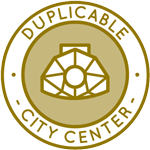 One Community is collectively improving the standard of living through a Duplicable and Sustainable City Center that is LEED Platinum certified/Sustainable, can feed 200 people at a time, provide laundry for over 300 people, is beautiful, spacious, and saves resources, money, and space:
One Community is collectively improving the standard of living through a Duplicable and Sustainable City Center that is LEED Platinum certified/Sustainable, can feed 200 people at a time, provide laundry for over 300 people, is beautiful, spacious, and saves resources, money, and space:
- Learn about this building and it’s function: Duplicable City Center Open Source Hub
This week, Andrew Chen (Industrial Designer) continued working on the Dormer second-floor window for the Duplicable City Center. He finalized the material drawing list for the second-floor window, added color and cutways to improve visual communication, and checked that all dimensions in the drawing were accurate. He also finalized the positions for screws and holes to ensure assembly, set up a rendering scene in Keyshot, and began rendering the model for the assembly instructions. One Community’s Duplicable City Center stands for collectively improving the standard of living through open-source innovation. Browse the photos below to explore this work.
Ariana Virginia Gutierrez Doria Medina (Industrial Designer) has continued the analysis and cost estimation of the windows for the Duplicable City Center. The first assigned task was completed, which included preparing the assembly instructions, estimating costs, and researching efficient methods for cutting the insulation material for the project. While awaiting feedback, work continued on the second-floor model, reviewing and redrawing parts in the design files to make them available for modifications and adjustments. Through open-source innovation, One Community’s Duplicable City Center contributes to collectively improving the standard of living. Check out the photos below.
Jason Bao (Architectural Designer) continued working on producing renders for the Duplicable City Center library. Adjustments were made to the project files based on Jae’s feedback, and a second shot sequence was prepared. Test renders were produced to evaluate scene quality and technical performance. Camera setups for a new exterior walkthrough sequence were configured, and the final rendering process was initiated to generate output files. Work progressed according to scheduled tasks and technical requirements. One Community’s Duplicable City Center is a powerful example of open-source work focused on collectively improving the standard of living. Browse the images below.
Mihir Patki (Civil and Construction Engineer) worked on updating the 2D CAD drawings for the Duplicable City Center project. Updates were made to the SketchUp files to reflect design refinements, including the introduction of a centralized pit-based collection system to minimize pipe length, reduce joint failure risks, and simplify maintenance. The rainwater calculations excel file was revised with updated zone areas, downspout classifications, and material cost breakdowns. These changes were reflected in the website content, which was edited to align with the latest designs and calculations. Edits followed One Community’s formatting guidelines, including strikethroughs and color-coded updates for transparency. A new ‘Suggestions and Future Scopes’ section was drafted, highlighting possible improvements such as modular trench layouts, improved overflow control, and water-quality monitoring options. The final report was compiled and submitted for review, including the updated drawings, spreadsheets, and written content. A walkthrough could not be provided due to recurring software issues; however, comments and notes were added in the shared Google Doc for clarity. Handoff was completed as part of Mihir’s notice period wrap-up. The Duplicable City Center, created by One Community, exemplifies open-source solutions for collectively improving the standard of living. Browse the visuals below.
Rudrani “Sravya” Mukkamala (Mechanical Engineer) continued researching the structural components of a Duplicable City Center hydraulic elevator. She focused on organizing and documenting all project-related notes and reference materials to ensure better accessibility and workflow continuity. Existing files and design resources were sorted into relevant categories, and outdated or redundant items were removed to streamline the working environment. In addition to documentation, progress was made on the overview schematic document by completing CAD modelling tasks that represent the general layout and major subassemblies of the hydraulic elevator system. This modelling work will support coordination between mechanical, electrical, and architectural components in the project. With open-source innovation at its core, the Duplicable City Center by One Community drives efforts toward collectively improving the standard of living. Check out the images below.
Shu-Tsun (Engineer) continued working on the Duplicable City Center by conducting the structural and frame analysis of the City Center dome using Autodesk Inventor, as well as working on the spreadsheet for which she is responsible. She made notable progress on the structural load analysis by refining both the wind and snow load evaluations. Shu-Tsun integrated real-world wind data into the calculation spreadsheet, enabling her to revise the initial wind load model which had produced less favorable results and achieve more accurate, site-specific outcomes. Additionally, she carried out a detailed snow load simulation using actual project data to validate and strengthen her revised analysis. One Community’s open-source Duplicable City Center reflects a commitment to collectively improving the standard of living. Explore this in the images below.
Srujan Pandya (Mechanical Engineer) continued helping with the Duplicable City Center FEA analysis. He worked extensively on editing the document and added comments addressing the changes mentioned by Jae in his feedback video related to the vertical load results. He reviewed Shu’s snow load work and identified necessary formatting adjustments in the spreadsheet. Additionally, Srujan researched new information on earthquake analysis and gathered relevant California earthquake data to strengthen the analysis section. The updated draft was formatted according to document standards, except for values awaiting confirmation. Tables across the document were reformatted to improve clarity and presentation. Through open-source development, the Duplicable City Center advances One Community’s mission of collectively improving the standard of living. View the photos below.
HIGHEST GOOD FOOD PROGRESS
 One Community is collectively improving the standard of living through Highest Good food that is more diverse, more nutritious, locally grown and sustainable, and part of our open source botanical garden model to support and share bio-diversity:
One Community is collectively improving the standard of living through Highest Good food that is more diverse, more nutritious, locally grown and sustainable, and part of our open source botanical garden model to support and share bio-diversity:
- Learn about the structures: Hoop House Hub | Aquapini & Walipini Open Source Hub
- See what we’ll be growing: Gardens & Hoop Houses | Large-scale Structures | Food Forest | TA
This week, the core team continued working on the Master Tools, Equipment, and Materials/Supplies document. They continued working on the orchard (ORCH) document, cross-referencing it with the ORCH listing entries. They also proceeded with changing the single-letter descriptions of various One Community projects to multi-letter abbreviations. This modification was implemented to expedite the location of each section for listing on the Highest Good Master Tools, Equipment, Materials/Supplies document. The Highest Good Food initiative is a key component of One Community’s open source plans, focused on collectively improving the standard of living, and exemplifies the organization’s commitment through innovative design and implementation. Below are some of the images showcasing this work.
Chelsea Mariah Stellmach (Project Manager) continued her work on the Transition Food Self-sufficiency Plan menus and customization spreadsheets. worked with Jae to finalize Tanmay’s work on the Food Procurement and Storage Overview. She primarily focused on redrafting the section on Summary of Needs for 50 Active Adults. With the availability of the Recipe Build-Out Tool, manual calculations for complete nutrition shopping needs are no longer necessary. Chelsea also worked on adding links, photos, and future videos, with the plan to integrate this report into the other related HG food pages. As an essential aspect of One Community’s open source goals, the Highest Good Food initiative supports collectively improving the standard of living as a foundation for sustainable living. Below are some of the images showcasing this work.
Dirgh Patel (Volunteer Mechanical Engineer) continued assisting with the Climate Battery design evolutions. He updated the table format in the report to align with standardization guidelines, making the presentation more focused on results with clearer explanations and additional data. He resumed work on the thermal simulation to better understand the internal temperature behavior of the greenhouse and aimed for improved accuracy in results. Dirgh completed simulations for critical environmental conditions, including the warmest day in winter, the warmest day in summer, and the warmest night in summer. He also finalized all remaining simulations, collected inside temperature data, added the remaining conclusions, addressed previously pending points, and updated calculation explanations in the report. One Community’s open source mission is powerfully reflected in the Highest Good Food initiative, which is focused on advancing and collectively improving the standard of living for global benefit. The following visuals highlight key outcomes of this initiative.
Jay Nair (BIM Designer) continued working on Aquapini and Walipini Planting and Harvesting lighting and HVAC design. He continued working on the lighting energy calculations for the zones in the Solawrap Walipini 1 greenhouse. The work involved applying the updated seasonal DLI data within a standardized format to maintain consistency across the document. Adjustments were made to ensure the calculations align with project requirements and formatting standards. The Highest Good Food initiative plays a leading role in One Community’s open source platform, promoting and collectively improving the standard of living through sustainable and participatory development. Below are some of the images showcasing this work.
Pallavi Deshmukh (Software Engineer) continued working on adding the new Zenapini 2 content to the Aquapini and Walipini Planting and Harvesting page. She completed nine interviews and submitted the required details. She continued working on the web page design by integrating Chris’s GIS content into the permaculture page using the web design tutorial. She reviewed team members’ work and incorporated their contributions to ensure the page was complete. Additionally, Pallavi created blog 636 and reviewed related work from the team. Fulfilling One Community’s open source objectives, the Highest Good Food project integrates collectively improving the standard of living into a larger vision of regenerative living. Her contributions are highlighted in the collage below.
HIGHEST GOOD ENERGY PROGRESS
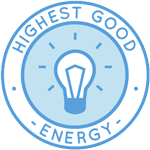 One Community is collectively improving the standard of living through Highest Good energy that is more sustainable, resilient, supports self-sufficiency and includes solar, wind, hydro and more:
One Community is collectively improving the standard of living through Highest Good energy that is more sustainable, resilient, supports self-sufficiency and includes solar, wind, hydro and more:
- Learn about the open source sustainable-energy foundations: Solar, Hydro, and Wind
- Explore our research into the most sustainable products and companies for saving water and energy: Insulation, Eco-laundry, Lightbulbs and Light Bulb Companies, Doors and Door Companies, Windows and Window Companies, Toilets, Faucets and Faucet Accessories, Urinals, and more.
This week, Dishita Jain (Data Analyst) continued assisting with the Highest Good Energy research and cost analysis for establishing a global eco-balance. She completed the cost analysis for all five phases and shared the Excel file for review. Throughout the week, she worked on the cost breakdowns for individual phases—finalizing phases two and three and progressing through phases four and five. She also completed the research required for Phase 1 and used it to support the analysis for the remaining phases. In the earlier part of the week, she gathered and updated cost data through ongoing research for each phase. In addition to this project, Dishita contributed to the OC Administration project by completing a review of the training team, updating the team collage, and adding the team summary on the WordPress platform. One Community’s open source mission is powerfully reflected in the Highest Good Energy initiative, which is focused on advancing and collectively improving the standard of living for global benefit. Below are some of the images showcasing this work.
Iman Al Harthy (Environmental Engineer) continued assisting with the Highest Good Energy research. She completed the onboarding process and reviewed materials related to off-grid versus grid-tie analysis. She read the shared analysis document, the profit calculation comparison for on-grid and off-grid systems, the cost analysis, and the profit calculation document. She began familiarizing herself with the on-grid versus off-grid calculator, reviewed previous feedback on the existing documents, and examined the reference tutorial for report formatting. Iman has started developing comments and questions to improve the existing work to better align with the original design criteria and goals, and plans to post the comments on the documents next week. One Community’s open source mission is powerfully reflected in the Highest Good Energy initiative, which aims at advancing society by collectively improving the standard of living of living for global benefit. Below are some of the images showcasing this work.
Muhammad Sarmad Tariq (Electrical Engineer) continued assisting with off-grid and grid-tied Solar Microgrid comparisons as part of the Highest Good Energy component. He continued working on the integration of a net-zero PV system in the report on the calculator for calculating profit and net savings for an off-grid and a grid-tied solar PV system. He tabulated the results where the PV system size was varied, and it was seen how many deficient units needed to be brought from the grid. A PV system size of around 100 kW was deemed sufficient for achieving net-zero status. Driven by its open source philosophy, One Community created the Highest Good Energy initiative to pioneer sustainable practices through advancing and collectively improving the standard of living. See his work in the collage below.
HIGHEST GOOD EDUCATION PROGRESS
 One Community is collectively improving the standard of living through Highest Good education that is for all ages, applicable in any environment, adaptable to individual needs, far exceeds traditional education standards, and more fun for both the teachers and the students. This component of One Community is about 95% complete with only the Open Source School Licensing and Ultimate Classroom construction and assembly details remaining to be finished. With over 8 years of work invested in the process, the sections below are all complete until we move onto the property and continue the development and open sourcing process with teachers and students – a development process that is built directly into the structure of the education program and everything else we’re creating too:
One Community is collectively improving the standard of living through Highest Good education that is for all ages, applicable in any environment, adaptable to individual needs, far exceeds traditional education standards, and more fun for both the teachers and the students. This component of One Community is about 95% complete with only the Open Source School Licensing and Ultimate Classroom construction and assembly details remaining to be finished. With over 8 years of work invested in the process, the sections below are all complete until we move onto the property and continue the development and open sourcing process with teachers and students – a development process that is built directly into the structure of the education program and everything else we’re creating too:
- Program Overview: Education Open Source Hub
- How the components work together in designing human orchestrated eco-abundance: How to use the Education for Life Program
- Lesson Plans for Life – Lesson Plans How-to
- Foundations of Outstanding Leaders, Teachers, and Communicators
- Curriculum for Life
- Teaching Strategies for Life
- Learning Tools and Toys for Life
- Evaluation and Evolution
This week, Harshitha Rayapati (Program Manager) continued work on detailing deliverables for the Highest Good education software platform, outlining various components, developing Figma designs, and expanding the visual layout of the student dashboard. This week, her work focused on adding comments to Anuneet’s Figma work to guide her and assign new design tasks. Feedback was provided on Figma design for the student dashboard, with additions made to the to-do screen and activities page to enhance interactivity. Pages and functions for the student dashboard and common navigation bar were further outlined to define next steps for Ravi and Anuneet. Requirements for the student dashboard were clarified during a call along with suggestions for updates. The behavior and visual layout of the student log and knowledge evolution screens were outlined. Coordination with Sidhartha, Chitra, Anuneet, and Ravi also took place to gather updates on frontend and backend work, resolve blockers, and provide clarification on software components. Additionally, worked on compiling the weekly blog update, reviewed the Graphic Design Team’s weekly progress, edited the blog page and created a collage. The One Community model of collectively improving the standard of living with sustainably built classrooms like this is an excellent example of sustainable change for the whole planet. See the collage below for her work.
Mai Mohamed (Electrical Engineer) started working on drawing the building and its rooms, determining the story heights, and establishing the scale and x-y coordinates to add spaces identified as classrooms. She renamed one space to “Classroom” and added furniture such as chairs, tables, and toilet seats to the classrooms and toilets. She also researched whether to use Philips LEDs, examining the types of LEDs available and the number needed. Sustainably built classrooms like this exemplify the One Community model of collectively improving the standard of living and driving global sustainable change. See the collage below for her work.
Mrinalini Raghavendran (Software Engineer) continued refining and documenting both frontend and backend requirements for various graphs. She worked on finalizing aspects of the code by adding styling, implementing additional functionality, and refactoring the code to prepare for a pull request. She created a frontend pull request for the task and began addressing the errors that came up during review. Mrinalini also started a new task, reviewed the issue outlined in the document along with the related references, and began debugging it locally. She continued working on the debugging process the following day, testing several local fixes, though the issue is still being investigated. By forwarding collectively improving the standard of living with classrooms like this, One Community provides a replicable example for global sustainable development. See the collage below for her work.
HIGHEST GOOD SOCIETY PROGRESS
 One Community is collectively improving the standard of living through a Highest Good society approach to living that is founded on fulfilled living, the study of meeting human needs, Community, and making a difference in the world:
One Community is collectively improving the standard of living through a Highest Good society approach to living that is founded on fulfilled living, the study of meeting human needs, Community, and making a difference in the world:
- Read the Highest Good society overview: Highest Good Society
- Learn about the model for fulfilled living and sharing: A Day in the Life
- Learn about the 4 economic models: RBE | For-profit | Non-profit | Entrepreneurship
- Learn about our open source community collaboration and management software: The Highest Good Network
This week, the core team completed over 41 hours managing One Community’s volunteer-work review not included above, emails, social media accounts, web development, new bug identification and bug-fix integration for the Highest Good Network software, and interviewing and getting set up new volunteer team members. They also shot and incorporated the video above that talks about collectively improving the standard of living and how collectively improving the standard of living are a foundation of the bigger picture of everything One Community is doing. The image below shows some of this work.
Govind Sajithkumar (Project Manager) continued focusing on analytics and content management for Facebook and Instagram via Meta platforms. He updated the social media analytics spreadsheet with the latest audience metrics for Facebook and Instagram, incorporating refreshed demographic data and new audience insights into the master file. He continued managing weekly content for Meta platforms by refreshing feeds with new posts, maintaining a regular posting schedule, and recording content details in the Open Source spreadsheet to align with audience engagement times. Govind’s responsibilities also included overseeing content rotation by preparing and scheduling posts, along with maintaining the Open Source spreadsheet. Additionally, he contributed to PR Review Team Management by providing feedback on team documents, updating the WordPress site with the weekly summary and collage, revising the PR Review Team Table and HGN PR spreadsheet, and submitting the admin feedback table. This effort supports One Community’s broader mission of collectively improving the standard of living. The images below showcase some of this work.
Hritvik Mahajan (Data Analyst) continued supporting both marketing and administrative tasks this week, with contributions to the Marketing and Promotion and Highest Good Network Software Development projects. He contributed to the HGN Software Development and OC Administration projects by reviewing multiple pull requests, following up with team members on Slack to address requested changes, and resolving merge conflicts. He supported Marketing and Promotion by posting high-engagement content in Twitter communities, resulting in increased followers. For OC Administration, Hritvik updated the Highest Good Energy and Highest Good Food sections for the weekly progress blog, created collages, commented on team contributions, and revised his webpage to reflect current progress.This initiative furthers One Community’s goal of advancing collectively improving the standard of living. The following images show his work for the week.
Jaiwanth Reddy Adavalli (Project Manager) continued developing the Job Applicants page along with components of the Highest Good Network Phase 2 and Phase 4 dashboards, including the PR Team analytics section. He worked on the development of the PR Review Team Analytics Dashboard. He discussed possible features and the overall design of the software with Neeharika, created wireframes, and wrote action items to guide further development. As part of the PR review team, Jaiwanth reviewed the pull requests of the volunteer team assigned to him. This project plays an important role in One Community’s commitment to collectively improving the standard of living. The following images show his work for the week.
ADMINISTRATION TEAM
The Administration Team summary, covering their work administrating and managing most of One Community’s ongoing process for collectively improving the standard of living was managed by Bhakti Tigdi (Project Manager) and includes Anuneet Kaur (Administrator), Himanshu Mandloi (Engineering Project Manager), Khushie Zaveri (Communication Strategist), Neeharika Kamireddy (Data Analyst), Olawunmi “Ola” Ijisesan (Administrative and Management Support), Olimpia Borgohain (Data Analyst and Team Administrator), Rachna Malav (Data Analyst), Rishi Sundara (Quality Control Engineer and Team Administrator), and Ryutaro (Ryu) Wongso (Economic Analyst and Team Administrator) The Highest Good Network software is how we’ll be managing and objectively measuring our process for collectively improving the standard of living through our social architecture, construction, production, and maintenance processes.
This week, the Administration team contributed across various areas including sustainability research, data analysis, hiring, social media planning, and SEO optimization. Anuneet researched sustainable flooring and glass recycling options, updated village pages with optimized media, prepared bio announcements, and drafted content for the Highest Good Education Program. She also participated in the hiring process and reviewed admin submissions. Himanshu performed daily timelog reviews, created new tasks, followed up with members for alignment, and developed a blog outlining open-source strategies for eco-philanthropy. Khushie supported the metrics campaign by refining outreach content, updating the media kit, aligning with the graphics team through briefs, and reviewing team copy. She also handled administrative coordination and contributed to campaign efforts on Reddit and Mastodon. The Duplicable City Center showcases One Community’s open-source contribution to collectively improving the standard of living through new-paradigm philanthropy and change.
Neeharika finalized the PR data analysis dashboard in Figma after collaborating with another team member and submitted it for review while also managing her admin tasks and reviewing others’ work. Ola monitored PR team progress on the Highest Good Network, maintained organized documentation, updated folders, managed social media scheduling, and uploaded weekly summaries with visuals. Olimpia completed LinkedIn post scheduling through June, finished a LinkedIn analytics report, progressed on the analytics dashboard, and supported regular admin tasks. Rachna was unable to schedule interviews due to timing conflicts but continued work on SEO pages and stayed up to date with team communications. Rishi created and uploaded member collages, merged blogs into Blog #636, completed SEO work, and managed follow-ups on delayed tasks and pull requests. Ryutaro reviewed development work from the Binary Brigade, continued cost analysis template development for the Duplicable City Center, created a summary collage, and drafted a supporting blog post. This work contributes to One Community’s commitment to collectively improving the standard of living. See below to view images of their work.
GRAPHIC DESIGN TEAM
The Graphic Design Team’s summary was managed by Harshitha Rayapati (Program Manager) and includes Junyuan Liu (Graphic Designer, UI/UX Designer) covering his work on graphic designs to support a model for collectively improving the standard of living. This week, Junyuan created social media content by collecting images, exploring various design options in design software. He brainstormed approaches for creating future images and worked for “Most Sustainable” Image, such as inserting sentences and adjusting the layout. In addition, he crafted bios for volunteers, designed images and edited information on a web page. See the Highest Good Society pages for more on how this contributes to collectively improving the standard of living. See the collage below to view some of their work.
HIGHEST GOOD NETWORK PROGRESS
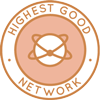 One Community is collectively improving the standard of living through open source Highest Good Network® software that is a web-based application for collaboration, time tracking, and objective data collection. The purpose of the Highest Good Network is to provide software for internal operations and external cooperation. It is being designed for global use in support of the different countries and communities replicating the One Community sustainable village models and related components.
One Community is collectively improving the standard of living through open source Highest Good Network® software that is a web-based application for collaboration, time tracking, and objective data collection. The purpose of the Highest Good Network is to provide software for internal operations and external cooperation. It is being designed for global use in support of the different countries and communities replicating the One Community sustainable village models and related components.
- Learn about our open source community collaboration and management software: The Highest Good Network
This week, the core team continued their work on the Highest Good Network PRs and confirmed fixes for six pull requests: leaderboard header screen size optimization (#3345), icon notification bubbles with 4-digit numbers (#3317), fixed width for the User Management title column (#3177), QSC color change issue (#3227), removal of extra space on the profile page (#3474), and general profile page fixes (#3187). One pull request, adding active/inactive numbers by teams on the team page (#2850), was not fixed. In addition, they left messages for three volunteers on Slack regarding issues found in PRs and reported three new issues that require fixing. These improvements represent incremental steps towards the realization of collectively improving the standard of living. See the Highest Good Society and Highest Good Network pages for more on how this relates to collectively improving the standard of living. The collage below shows some of their work.
ALPHA SOFTWARE DEVELOPMENT TEAM
The Alpha Software Team, covering their progress on the Highest Good Network software, was managed by Lin Khant Htel (Frontend Software Developer), and the team includes Nikita Kolla (Full Stack Developer). This platform streamlines internal communication and operations with the overarching aim of collectively improving the standard of living. Lin reviewed and approved PR #3553 after testing the code on a local machine and confirming that all the test cases passed as expected. Lin also reached out to team members for consultation, reviewed Alpha team members’ weekly summaries, photos, and videos, and handled management duties for the Alpha Team. This work reflects One Community’s ongoing commitment to collectively improving the standard of living.
Nikita worked on an issue in the Phase 2 Summary Dashboard related to the horizontal bar graph of P5, where the page refreshes and blinks briefly when the graph type is changed. She investigated the cause of this behavior and worked on implementing a fix to address it. See the images below for more illustrations of the team’s work, reflecting the vision to collectively improve the standard of living. This work contributes to One Community’s commitment to collectively improving the standard of living.
BINARY BRIGADE SOFTWARE DEVELOPMENT TEAM
The Binary Brigade Team’s summary overseeing advancements in the Highest Good Network software was managed by Aureliano Hubert Maximus (Volunteer Software Engineer) and includes Anirudh Sampath Kumar (Software Developer), Geeta Matkar (Software Engineer), Jaissica Hora (Software Engineer), Nikhil Routh (Software Engineer), Sabitha Nazareth (Software Engineer), Samman Baidya (Software Engineer), Vasavi Vuppala (Software Engineer), Vamshi Gutha (Full-Stack Developer), and Wangyuan Chen (Software Engineer). The Highest Good Network software is how we’ll be managing and objectively measuring our progress in collectively improving the standard of living through our social architecture, construction, production, and maintenance processes.
This week, Anirudh resolved a bug in a previously completed PR that enabled owners to manage CC email recipients for job application notifications, contributing to backend reliability and collectively improving the standard of living. The issue—caused by missing logic for the “All” category—was fixed by updating the code to loop through all categories and apply the email addresses, preventing server errors. Aureliano focused on auto-poster development for multiple platforms within the HGN Software Development project, aligning integrations with goals aimed at collectively improving the standard of living. He completed Imgur integration, cleaned up code, researched the Threads API, connected relevant social media platforms via Facebook Business Suite and implemented Facebook login using the SDK. Geeta resolved a merge conflict for task 200, which updated the blue square system to display the issuer’s identity in the description, enhancing clarity and collectively improving the standard of living. After verifying the changes, she merged the code into the development branch under PR 3376.
Jaissica fixed two issues related to the Weekly Summary and Task Assignment features, ensuring that access and functionality worked for users across roles while collectively improving the standard of living. She restored Weekly Summary visibility for Volunteer accounts and corrected a dropdown display error so all team members appeared properly during task assignment. Nikhil continued converting standard CSS imports to CSS Modules, modernizing code structure to support maintainability and scalability. Import paths were changed, and className usage was updated to reflect the modular styling format. Sabitha progressed on the Bitly auto-poster by confirming task requirements with Jae, registering a Bitly account, and setting up backend routes and controllers in Node.js, aligning system architecture with the broader aim of collectively improving the standard of living. She compared her setup with the Imgur auto-poster and refined authentication processes. Samman submitted his grouped chat bar task for Phase II and began work on a new FAQ section for Phase III events, integrating user-focused design elements aimed at collectively improving the standard of living. He built the layout, styled toggles and buttons, and began resolving bugs encountered during integration.
Vamshi worked on the Summary Dashboard’s line chart feature, focusing on injury data visualization over time to support decision-making and collectively improve the standard of living. He integrated data sources, debugged rendering issues, and adjusted chart behavior for better dashboard compatibility. Vasavi contributed to both backend and frontend development of the Phase 2 Summary Dashboard by designing API endpoints and frontend logic that responded dynamically to user input, reinforcing a system built for collectively improving the standard of living. She implemented /api/injuries/yearwise with filters and supported real-time chart rendering. Kaia resumed work on the Weekly Summary Email feature by organizing updates in a new GitHub branch and addressing permission issues while aligning team communications toward collectively improving the standard of living. She also reviewed PR #782 and began refining the code and functionality. See the Highest Good Society and Highest Good Network pages to learn more on how this relates to collectively improving the standard of living. View some of the team’s work in the collage below.
BLUE STEEL SOFTWARE DEVELOPMENT TEAM
The Blue Steel Team’s summary, presenting their work on the Highest Good Network software, was managed by Sheetal Mangate (Software Engineer) and includes Linh Huynh (Volunteer Software Engineer), and Ramakrishna Aruva (Software Engineer). The Highest Good Network software is how we’ll be managing and objectively measuring our process for collectively improving the standard of living.
This week, Linh worked on the Bluesky auto-poster feature for the Highest Good Network project, focusing on refining the user interface to enable users to connect their Bluesky accounts, create posts, and manage existing posts with options to view or delete them. He updated CSS styles to improve layout spacing and media presentation for images, videos, and GIFs. On the backend, he implemented routes and API logic for post creation, retrieval, and deletion using a controller, service, and router structure. Linh used express-session to manage user sessions with Bluesky credentials and modified middleware to permit unauthenticated access to specific Bluesky endpoints. He also updated CORS configuration to support frontend-backend communication with credentials and tested the system to verify session persistence and error handling during connection and posting workflows. This effort supports One Community’s dedication to collectively improving the standard of living.
Ramakrishna optimized the color generation logic using the D3 library, tested the feature for expected functionality, submitted a pull request, and notified Jae about the update. He then started a new task to add a key for weekly summary date submission time in the database. He reviewed the codebase to determine the correct implementation approach, created a new backend branch for development, and encountered a Node module issue that he is currently investigating. Sheetal worked on integrating the Reddit API using OAuth authentication. She implemented code for various API endpoints based on the defined routing structure and worked on obtaining and managing the access token from Reddit, which is required for making authenticated API requests. See the Highest Good Society and the Highest Good Network pages to learn more about how their work contributes to collectively improving the standard of living. See below to view images of their work.
CODE CRAFTERS SOFTWARE DEVELOPMENT TEAM
The Code Crafters Team, covering their work on the Highest Good Network software, was managed by Sundar Machani (Software Engineer) and includes Ashrita Cherlapally (Software Engineer), Dhrumil Dhimantkumar Shah (Software Engineer), Greeshma Palanki (Software Engineer), Humera Naaz (MERN developer), Rahul Prasad (Software Engineer), Ravikumar Sripathi (Software Engineer), Sai Moola (Software Engineer), and Sravan Kumar Bodakonda (Software Engineer). The Highest Good Network software is how we’ll manage and objectively measure our process for collectively improving the standard of living through our social architecture, construction, production, and maintenance processes.
This week, Ashrita implemented a horizontal bar chart titled “Most Popular Roles” to show role competitiveness based on application counts. She set up the frontend layout with X-axis values for application numbers and Y-axis for role names, with data labels turned on. She added filters for role and date, and the graph updates based on user input. Dhrumil completed work on the assigned task associated with PR #3567. During the review process, additional requirements were identified. Specifically, the filter button was not functioning as expected and pagination had not been implemented. These issues were resolved and the necessary updates were made to the pull request. Work also started on the dark mode feature. This contribution is part of One Community’s initiative dedicated to collectively improving the standard of living. Greeshma implemented role-based restrictions for the Weekly Summaries feature to limit access based on user roles. While testing, they addressed issues with undefined role values and UI failures, and updated the Manager role logic in the permissions configuration. They also analyzed the code structure related to role-based checks to support troubleshooting. Sravan worked on the frontend component (injury.jsx) for the “Total Injuries Over Time” feature connected with the backend API, and the integration is functioning as expected. Data are being retrieved from MongoDB, and all filters, including project, date range, injury type, department, and severity, are operational. Work is ongoing to make minor adjustments to the user interface and to improve the quality and structure of the data in the MongoDB collection. This work plays a vital role in One Community’s approach to collectively improving the standard of living.
Humera worked with testers to verify the backend badge functionality and address existing errors. She identified that an API was returning a 404 error despite using the correct route and controller, and reviewed the issue to determine its source. The application appeared to function correctly in her local environment, indicating the problem may be environment-specific. She resolved the personal maximum badge issue but is awaiting tester confirmation for validation. This work plays a vital role in One Community’s approach to collectively improving the standard of living. Rahul fixed the TimeLog.jsx file by defining the expected props using propTypes and connecting the necessary Redux functions. He resolved an issue involving duplicate TimeLog function declarations. Some errors remain, potentially due to incorrect imports, leftover references, or misplaced return statements; these are under review. He also worked on core TimeLog functionality related to time log tracking. On the backend, he added logic in logtimestamps.jsx to support the creation, storage, and retrieval of timestamp data for tracking user activities and event durations. Ravi updated the “Past Lesson Plans” module from a static interface to an interactive one that supports student engagement. The update includes a card grid layout for lesson plans, tools for logging reflections, asking questions, submitting work, and organizing plans with labels and favorites. Students can also use the Growth Portfolio for reflections and review analytics on their performance and responses. This action supports One Community’s strategy for collectively improving the standard of living.
Sai continued work on the task “Phase 2 Summary Dashboard: Create a bar graph for issues breakdown by type.” Progress included fixing an alignment issue with the chart title and legends, creating backend endpoints, and adding them to the routes file. The endpoints were tested using Postman by creating three mock projects and adding issues to them. Work is currently ongoing to fetch this data from the backend and display it on the frontend. This contribution helps drive One Community’s mission of collectively improving the standard of living. Additionally, merge conflicts were resolved for open PR #3514. Sundar worked on resolving merge conflicts and addressing reviewer comments across several PRs, including front-end updates and documentation improvements. He completed the registration page UI for the listing and bidding platform, pending backend integration, and made progress on the attendance and no-show tracking feature, which is now ready for review. Some functionality issues remain in older PRs due to significant codebase changes. See the Highest Good Society and Highest Good Network pages for more on how this relates to collectively improving the standard of living. View some of the team’s work in the collage below.
DEV DYNASTY SOFTWARE DEVELOPMENT TEAM
The Dev Dynasty Team’s summary, covering their work on the Highest Good Network software, was managed by Honglin Chen (Software Engineer) and includes Dharmik Patel (Software Engineer), Mohan Satya Ram Sara (Software Engineer), Shraddha Shahari (Software Engineer), Vamsi Krishna (Software Engineer), and Zhifan Jia (Software Engineer). The Highest Good Network software is how we’ll manage and objectively measure our process for collectively improving the standard of living through our social architecture, construction, production, and maintenance processes.
This week, Dharmik completed the feature to display the number of blue squares on the User Management page by resolving merge conflicts, testing the initial fix, and submitting it for review. He made enhancements in response to feedback by adding a tooltip, linking the count to user profiles, and formatting alignment, and began investigating a discrepancy noted during review. He also requested 20 additional hours to complete the task. Honglin wrapped up all open pull requests by resolving merge conflicts and documenting the status of each in a wrap-up document, created action items for all remaining tasks requiring reassignment, and selected and trained a team member to take over the manager role for transition continuity. This effort is aligned with One Community’s long-term vision for collectively improving the standard of living.
Mohan resolved a dropdown overlap issue in the HighestGoodNetworkApp, focusing on conflicts with the Taking Time Off section on larger screens. He refined z-index handling, cleaned up class selectors, and removed temporary styles to improve maintainability. After encountering Husky pre-commit errors from unrelated linting issues, he isolated the fix in a new branch and committed only the relevant changes. Mohan completed cross-browser testing, including Safari, to ensure consistent rendering and he verified no impact on other dropdowns, modals, or collapsible sections. Shraddha worked on a pull request related to badge assignment duplication and collaborated with a colleague to debug the issue, trying multiple code and MongoDB configuration changes. The issue remains unresolved and under investigation. She also analyzed a problem affecting the email creation API tied to editing email addresses on the Profile Page and made progress on implementing code changes. This work reflects One Community’s philosophy of collectively improving the standard of living.
Vamsi began development on the Phase 2 Summary Dashboard by reviewing feature requirements for a stacked horizontal bar graph on tool stoppages, created a GitHub repository for frontend work, and updated the IssuesList component to enable automatic refresh after issue updates. He moved styling for the multi-select dropdown to CSS using classNamePrefix, implemented dark mode support, updated the date range picker display, replaced nested ternary expressions for readability, and added comments to improve maintainability. Zhifan worked on a hotfix for the “Hours Logged” section missing from the Weekly Summaries Report, identified a mismatch between frontend expectations and backend structure, and resolved it by updating the backend to align with the multi-week tab system. He removed debugging logs, fixed an intermittent cacheUtil.getCacheTime error, resolved merge conflicts by adopting the new architecture, replaced class methods with functions and lifecycle methods with useState and useEffect for the anniversary feature, removed a duplicate button, and adjusted filter sizes. See the Highest Good Society and Highest Good Network pages for more on how this relates to collectively improving the standard of living. View some of the team’s work in the collage below.
EXPRESSERS SOFTWARE DEVELOPMENT TEAM
The Expressers Team’s summary, covering their work on the Highest Good Network software, was managed by Strallia Chao (Software Engineer), includes Casstiel Pi (Software Engineer), Meenashi Jeyanthinatha (Full Stack Developer), Rahul Trivedi (Software Engineer), and Reina Takahara (Software Developer). The Highest Good Network software is how we’ll manage and objectively measure our progress toward collectively improving the standard of living through innovative software development, testing, and collaboration. This week, Casstiel received a first bug fix task and tested it locally while researching possible solutions. The issue involved a span element using window.open that blocked middle and right-click actions. He resolved this by changing the element to a standard link, adding both onClick and onAuxClick handlers to support multiple click types, and used preventDefault to stop navigation when the link was missing. A toast error message was shown for both left and middle clicks when no link was present. Casstiel also submitted a first pull request, created a branch from the forked repository, and documented changes while gaining experience with Git and version control. Meenashi focused on managing the difference between the initial and final bid using the updateOrder function, which triggered on each bid price change. These updates were stored for processing after the bidding period. When the deadline passed, a checkoutNow request was sent to the selected user for approval within three hours. Once approved, the order could be authorized and the final amount captured within 29 days. This task contributes to One Community’s broader goal of collectively improving the standard of living.
Rahul worked on resolving alignment issues in the Dashboard’s Tasks table. He ran multiple tests to identify the source of layout inconsistencies and made adjustments across several CSS files. He continued making refinements to improve visual consistency and eliminate misalignments. This work reflects One Community’s philosophy of collectively improving the standard of living. Reina fixed an older pull request involving the Job Positions page. She replaced a clickable header with a button, corrected filtering behavior by including category data in the backend search results, and introduced a variable to retain pagination when switching to summaries. Strallia reviewed pull requests related to the Total Org Summary page, including PR3503 for the Hours Completed chart and PR3560 for adding a tooltip. She identified issues in PR3503, updated the task sheet with follow-up actions, and provided backend guidelines for adding a database field required by the Total Summaries Submitted component. She also checked in with team members regarding their progress across Summary page features. See the Highest Good Society and Highest Good Network pages for more on how this contributed to collectively improving the standard of living. See the collage below to view the team’s work.
LUCKY STAR SOFTWARE DEVELOPMENT TEAM
The Lucky Star Team’s summary of the Highest Good Network software was managed by Anne Zhang (Software Engineer) and Koushica Bosadi Ulaganathan (Software Engineer), and includes contributions from Barnaboss Puli (Volunteer Software Engineer), Dipti Yadav (Software Engineer), Ganesh Karnati (Software Engineer), Manusha Jyasta (Senior Software Engineer), and Manoj Gembali (Software Engineer). This week’s outcome highlighted the value of shared input, aligning with the collaborative approach of collectively improving the standard of living. Anne focused on creating components related to Mastodon and the announcement page. She reviewed previous developer solutions and collected relevant materials, trained managers using documentation and recordings, managed the Lucky Star team’s reviews and weekly pictures, and responded to questions about One Community responsibilities. This work strengthens One Community’s initiatives aimed at collectively improving the standard of living. Barnaboss worked on the auto-poster by reviewing design documentation and code to outline the OAuth 2.0 token flow and media upload sequence. He resolved a stale callback URL issue, updated environment variables, refreshed tokens in staging, and confirmed scheduled posts included media and hashtags. He introduced error logging for rate-limit responses, added unit tests to the posting helper, and opened a pull request. This effort is aligned with One Community’s long-term vision for collectively improving the standard of living. In the resources workflow, he resolved a member search issue by adjusting prop transfers between components, inserted a fallback in TagsSearch, and verified both create and edit paths before pushing the fix. Dipti resolved a hotfix for the broken short setup code, which was submitted and merged via PR #3578. She then continued work on the separate Subscribe and Unsubscribe pages, addressed review feedback, and updated existing PRs #1418 and #3566 accordingly. She also began work on cleaning up an old frontend pull request (PR #2638), focusing on completing its implementation. This effort exemplifies One Community’s dedication to collectively improving the standard of living.
Ganesh finalized the Most Expensive Open Issues feature by integrating the backend, configuring filters, and connecting the chart to live data. He enhanced the chart’s visuals for readability and responsiveness, applied CSS updates for cross-device compatibility, and confirmed dark-mode functionality for UI elements like axis labels and dropdowns. Koushica resolved a hotfix where WBS sections displayed incorrect users and allowed improper task assignments. She verified both old and new task flows and confirmed correct functionality. She continued finalizing task #3128, which involved refactoring for structure, implementing lazy loading in routing, converting CSS to modules, and fixing a data persistence issue where new WBS tasks were not displaying on revisit. This work contributes to One Community’s commitment to collectively improving the standard of living. Manoj resolved merge conflicts for the Help Request Modal pull request and integrated it with backend endpoints. He completed the Tool Availability chart by connecting it to backend data, adding filters for project and date, and uploading mock data into MongoDB for testing. Separate pull requests were created for both frontend and backend. Manusha developed the Job Posting Page Analytics feature. She implemented an API endpoint that returns a donut chart breakdown of applicants by experience levels, using a MongoDB aggregation pipeline with filtering options for date and roles. She added error handling for invalid inputs, empty data, and timeouts to improve API reliability. See the Highest Good Society and Highest Good Network pages for more on how this relates to collectively improving the standard of living. See the collage below to view the team’s work.
MOONFALL SOFTWARE DEVELOPMENT TEAM
The Moonfall Team’s summary, covering their work on the Highest Good Network software, was managed by Newell Newell (Manager) and includes Akanksha Singh (Software Developer), Angad Anil Gosain (Volunteer Software Engineer), Bhavpreet Singh (Software Engineer), Shashank Kumar (Software Engineer), and Yili Sun (Software Engineer). This week, Angad reviewed backend logic in timeEntryController.js and confirmed that using await updateTaskLoggedHours() resolves asynchronous update issues for newly created tasks, while identifying a need for a reconciliation script to fix historical records. He addressed 404 errors in GitHub, Sentry, and Dropbox endpoints by correcting route imports, verified functionality through logging, and implemented frontend access toggling logic with modals and state updates. He also resolved build issues, fixed rendering errors, managed merge conflicts, and finalized frontend UI for access flows. This effort supports One Community’s dedication to collectively improving the standard of living.
Bhavpreet improved a previously fixed bug based on reviewer feedback, enhanced the chart component, completed the comments section in the community portal with mobile responsiveness, and implemented a dark mode template. He also aligned tooltips and visuals on the job application page and began resolving a deployment issue affecting weekly reports. Akanksha began work on a Medium autoposter by reviewing API docs, testing authentication, and outlining features such as scheduling, AI summaries, and error handling. She ensured secure credential storage and resolved merge conflicts in PR1831 and PR704. Yili completed unit tests for emailController.js, covering both success and error cases, and updated test structure for maintainability. This task reflects One Community’s goal of collectively improving the standard of living. Newell finalized integration of the better-auth module into the Nest.js backend, including SSO with Microsoft and GitHub, resolved associated errors, restructured backend modules for queue monitoring, and updated the config system. Shashank addressed an issue with a frontend chart component by relocating it to its correct section after identifying routing issues, used mock data to continue development while awaiting backend resolution, and uploaded the revised component to Dropbox for team review. See the Highest Good Society and Highest Good Network pages for more information on how this contributed to collectively improving the standard of living. Below is a collage of the team’s work.
REACTONAUTS SOFTWARE DEVELOPMENT TEAM
Reactonauts’ Team’s summary, covering their work on the Highest Good Network software, was managed by Akshay Jayaram (Software Engineer) and includes Ghazi Rahman (Software Engineer Intern), Gmon Kuzhiyanikkal (Software Engineer), Guirong Wu (Software Engineer), Nikhil Pittala (Software Engineer), Pallavi Thorat (PR Team O-Sh), Peterson Rodrigues (Full-Stack MERN Stack Developer), Rishitha Mamidala (Software Engineer), Saniya Farheen (Software Engineer), and Siva Putti (Software Engineer). This software forms the foundation of One Community’s tracking and management system designed to collectively improve the standard of living.
This week, Akshay fixed PR 3299 and 1283 on the BM Dashboard Time Log at “/bmdashboard/timelog” by separating “STOP” and “Clear” functions, resolving UI and timer issues, while managing team progress and weekly reviews. Ghazi refactored TagsSearch and AddTaskModal in the HGN Software Development project to use preloaded active users, improved task assignment logic, resolved data inconsistencies, and added console logs for debugging, collectively improving the standard of living with 16 hours and 8 minutes logged over two days. Gmon worked on the BMDashboard, pushed PR 2850 to main with supporting media in Dropbox, faced a workspace crash after adding GitHub Copilot, and reviewed the project’s architecture, collectively improving the standard of living. Guirong confirmed browser limits on pinning the pop-out window, adjusted the countdown ring via HTML, and completed backend work for the YouTube auto-poster with API integration, collectively improving the standard of living, while frontend tasks remain pending post-testing.
Nikhil reviewed 14 pull requests across front-end, back-end, and unit tests, verifying functionality, coding standards, and regression absence—collectively improving the standard of living—providing feedback and approving changes that advanced the project. Pallavi added template management to the job form builder with CRUD endpoints and Redux authentication, fixed related errors, and created a React bar chart showing average application times by role. Peterson fixed a bug on the Badge Management page by hiding badges without images to prevent errors when editing, collectively improving the standard of living. Rishitha created the “Set Final Day” button permission for admin and owner roles, collectively improving the standard of living with an initial assignment pending.
Saniya resolved an old pull request and investigated a bug that hid content on the HGN Help Form, collectively improving the standard of living. Siva fixed team creation under Other Links and updated Dashboard Tasks to restrict Delete Task access. This work helps One Community’s mission of an open-source paradigm for ecological living. See the collage below to view the team’s work.
SKYE SOFTWARE DEVELOPMENT TEAM
Skye Team’s summary, covering their work on the Highest Good Network was managed by Olimpia Borgohain (Data Analyst and Team Admin) and Luis Arevalo (Software Engineer). The team includes Anthony Weathers (Software Engineer), Gopikalakshmi Asok Kumar (Software Developer), Julia Ha (Software Engineer), Prit Patel (Software Engineer), and Sai Preetham Dongari (Full Stack Developer). The Highest Good Network software helps manage and objectively support social architecture, construction, production, and maintenance processes—collectively improving the standard of living and fostering sustainable, thriving ecosystems. This solution is portable, scalable, and ideal for off-grid or sustainable living communities.
This week, Anthony made changes to the Manage User Permissions modal based on feedback, increasing the height of the div containing Save Changes and Cancel buttons on narrow screens to ensure proper spacing, updating the logic for displaying green and red star icons to indicate added and removed permissions, and adding a paragraph element that shows hover text corresponding to these changes. He worked on collectively improving the standard of living, and also updated the Reset to Default info modal to reflect updates involving added and removed permissions and fixed an issue where default permission removal did not properly update the add or delete button states. Gopika worked on resolving issues related to the “Fix Reports > Reports > Show Total People Report” task by adding a warning message for date ranges within one month, verifying the update in both light and dark modes, and addressing a padding issue in the Category container section. She received Production report access but encountered consistent zero data and an error message, which could not be replicated due to access limitations and required further clarification from Jae. For the “Old Frontend PR Clean Up Task: Finish implementing PR2184”, she reviewed the development region and found the changes already present, and asked Jae for confirmation on whether to proceed with merging or closing the issue. This work plays a vital role in One Community’s approach to collectively improving the standard of living.
Julia implemented a bar chart using the react-chartjs-2 library to display total material cost per project with test data, x-axis project names, y-axis cost values, a cost unit legend, and tooltips. She added a multi-select dropdown for users to choose which projects to display on the chart. She worked on improving the responsiveness of the weekly report summary page by adjusting the filter section toggles to remove the tri-stage appearance on mobile screens, updating the width of the report box and Media URL to expand to full screen on mobile, and removing unnecessary spacing. She also modified the layout of the Total Valid Summaries and Bio Announcement to fit better on mobile by splitting them into two lines, and adjusted the anchor text of the pie chart for mobile and larger screens. This contribution helps drive One Community’s mission of collectively improving the standard of living. Prit worked on identifying the appropriate file to manage the initial visibility settings for different permissions. During this process, he made adjustments to the teams table headers and the “delete” and “members” buttons. Sai Preetham reviewed multiple pull requests and resolved merge conflicts related to the hide pause final day task for the HighestGoodNetworkApp project, contributed to the weekly summary, managed Dropbox images, and worked with PR-3541, PR-3335, PR-3123, PR-3492, PR-3468, and PR-3444 as well as older development tasks. See below for the work done contributing to collectively improving the standard of living.
SOFTWARE PR REVIEW TEAM A-F
This week, the PR Review Team’s summary for team members with names starting from A to F, and covering their work on the Highest Good Network software was managed by Neeharika Kamireddy (Data Analyst). The Highest Good Network software is a foundation of what we’ll be using to measure our results of collectively improving the standard of living. This week’s active members of this team were: Abdelmounaim Lallouache (Software Developer), Carlos Gomez (Full-Stack Software Developer), and Dinesh Vardhan Bonthu (Software Developer). They assisted with the research for collectively improving the standard of living by reviewing all the Highest Good Network PRs (Pull Requests) shared in this week’s update. Learn more about how the Highest Good Network measures collectively improving the standard of living by exploring the Highest Good Network open-source hub. The collage below shows a compilation of the work from this team.
SOFTWARE PR REVIEW TEAM G-N
This week, the PR Review Team’s summary for team members with names starting from G to N, and covering their work on the Highest Good Network software was managed by Govind Sajithkumar (Software Project Manager). The Highest Good Network software is the foundation for measuring our progress in collectively improving the standard of living. This week’s active members of this team were: Jitesh Parapoil (Software Engineer), Kurtis Ivey (Full Stack Developer), Nahiyan Ahmed (Full Stack Software Developer) and Nathan Hoffman (Software Engineer). They reviewed all the Highest Good Network PRs (Pull Requests) shared in this week’s update. Learn more about how the Highest Good Network measures collectively improving the standard of living by exploring the Highest Good Network open-source hub. The collage below shows a compilation of the work from this team.
SOFTWARE PR REVIEW TEAM O-Z
This week, the PR Review Team’s summary for team members with names starting from O to Z, and covering their work on the Highest Good Network software was managed by Jaiwanth Reddy Adavalli (Software Project Manager). The Highest Good Network software is the foundation for measuring our progress in collectively improving the standard of living. This week’s active members of this team were: Ramsundar Konety Govindarajan (Software Engineer), Taariq Mansurie (Full-Stack Developer) and Yiyun Tan (Software Engineer). They reviewed all the Highest Good Network PRs (Pull Requests) shared in this week’s update. Learn more about how the Highest Good Network measures collectively improving the standard of living by exploring the Highest Good Network open-source hub. The collage below shows a compilation of the work from this team.
AND WE PRODUCED THIS WEEKLY UPDATES BLOG – CLICK HERE TO SUBSCRIBE
FOLLOW ONE COMMUNITY’S PROGRESS (click icons for our pages)
INVESTOR PAGES
GET INVOLVED
DONATE | WAYS ANYONE CAN HELP | MEMBERSHIP
CLICK HERE FOR ALL PAST UPDATES
 One Community
One Community